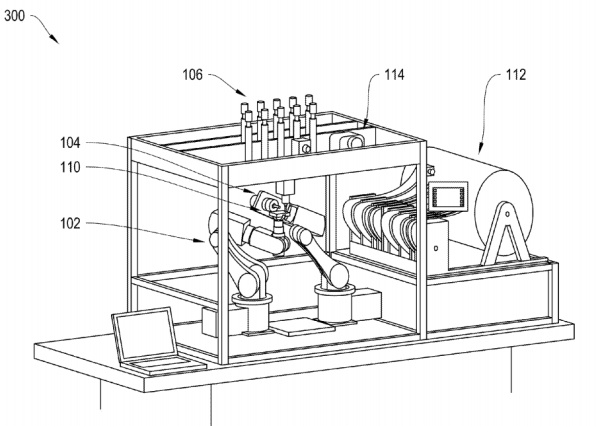iRobot Files Patent for Fully Robotic Manufacturing

iRobot’s Robotic Fabricator could theoretically manufacture itself. Courtesy of iRobot.
Latest News
January 23, 2013
Some of the hoopla surrounding 3D printing has included the premise that it can reshore jobs in countries that have seen labor outsourced to places like China, Mexico and India. With additive manufacturing (AM), it doesn’t make sense to ship jobs around the globe, when the shortened supply chain could make up for wage disparity. Long trips by slow ships also negatively impacts the production speed offered by rapid prototyping and manufacturing.
Sure, most people understand that an AM factory isn’t going to employ the sheer number of workers as the good old days, but it’s one step up from the service industry grind. Building an infrastructure for the new supply chain will create additional jobs, and so on. iRobot may upset that budding paradigm if it delivers on a recent patent.
If you don’t immediately recognize the company name, iRobot is best known to average consumers as the company responsible for the Roomba. The robotic vacuum sweeper that looks as though it escaped from a Star Wars set is hardly the only product available from the company. iRobot works in the defense and maritime fields, as well as providing semi-novelty robots for the home.
Now, the company is moving into the manufacturing arena with the patent for a “Robotic Fabricator.” So what does the bringer of the economic apocalypse do? From the patent application:
The systems and methods described herein include a fabrication machine/method that fuses additive and subtractive manufacturing with in-situ component placement to provide completely autonomous all-in-one product manufacturing. Product fabrication is centered around a six-axis industrial robotic manipulator (primary manipulator) that handles the product from seed component to mature product.According to one feature, all-in-one product manufacturing increases the ability to produce prototypes or small production runs of devices, since no human intervention is used, product design is simpler and production is more efficient.
If those paragraphs made your eyes glaze over, I’ll summarize. In one machine, you have a 3D printer along with subtractive manufacturing elements, which can run without human interaction to build new products.
Obviously a patent application doesn’t necessarily mean the robots will be stealing jobs tomorrow, or ever, but it is interesting that someone is always looking for a way to minimize the human element. (The real bringer of economic apocalypse has to be this robotic burger maker.) Additionally, I suspect the patent is attempting to cover more ground than is actually possible, but that is SOP for companies these days.
Below you’ll find a short video that showcases some of the different products available from iRobot.
Sources: iRobot, New Scientist, US Patent and Trademark Office
Subscribe to our FREE magazine, FREE email newsletters or both!
Latest News
About the Author
John NewmanJohn Newman is a Digital Engineering contributor who focuses on 3D printing. Contact him via [email protected] and read his posts on Rapid Ready Technology.
Follow DE






